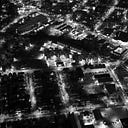DronaFarms: Second Wave of Green Revolution powered by grassroots data
India has 34% more land under agriculture than China but it produces less agriculture outputs per unit area (China produces 40% more rice and wheat than India). To increase our productivity per unit area there needs to be a massive consolidated plan touching every part of the value chain thereby overcoming the drawback of small fragmented land holdings in India. As big as the challenges are, it is also a huge opportunity — Gross Value Added by agriculture and allied industries is Rs 17.67 trillion (US$ 274.23 billion) in FY18.
Solutions with advisories based on satellite maps with or without artificial intelligence are like open courseware — accessible to everyone and followed by very few. Drone based precision agriculture is a complement that allows repeated mapping and tracking of plant count and plant health metrics over the entire cropping season. Frequent scouting is where drone technology solutions excel. We recognise the extent of the problem around 10 days before human eyes can see it and provide the necessary steps that must be taken. It is possible to decrease cost of inputs for individual farmers by an estimated 30% and increase yield drastically (around 45% by conservative estimates).
Precision agriculture divides a field into zones that can be individually managed. Technology enables farmers to collect, store, combine and analyze the layers of data that drive precision nutrient and irrigation management.
Spot-checking, the most common method used to get this information today, does not accurately capture conditions across an entire field. With very large fields, the problem is exacerbated; scouting the perimeter cannot reveal issues deep within the field, and the time to scout grows proportionally with acreage. However, even within small fields like in India, it is often hard to walk through them, disturbs the crop, and close range visual observation has limitations.
For drones to be a solution for Indian agriculture they must answer two questions — technical impact and cost effectiveness. We approached our first few experiments with Reliance Foundation with infinite hope extrapolated from theoretical research and a healthy dose of skepticism stemming from our acquaintance with the challenges in Indian agriculture. Here we are sharing our experience of the first few mappings that convinced us that drones are a viable solution for the challenges of Indian agriculture.
Consistency in visual observations over multiple mappings:
The first time we mapped the sample fields, in the agricultural indices and orthomosaics we noticed certain areas of interest. What you see below are images that chronicle the health of the crop in those areas over the season:
Tracking Origin and movement of the pest
On the top is a brinjal Farm with areas of stress clearly visible and observed during Mapping 0.
Above is the screenshot of the Orthomosaic of the same patch during Mapping 1. You can see that the plant stress increased substantially and started spreading across the farm.
After the interventions taken by the ground team based on the insights given by DronaMaps post mapping 1, you can observe that the stress in the entire field has reduced slightly. A qualitative observation that is validated by our quantitative data mentioned in the screenshot below.
The Soil Piece
The soil data collected from soil samples is overlaid on the maps which are used to predict soil features in the areas we have not taken samples in. Over time with enough data, this can become predictive thereby allowing us to provide more informed insights to farmers. The regions with the darkest brown are closest to where the sample was taken. As the color lightens, the value changes. Our algorithms can predict the value of a parameter at a given point with some accuracy.
Impact
A large portion of crop in the test area was correctly diagnosed with: Jassids, Fruit and Shoot Borer, Zinc Deficiency, Leaf Miner Flies, Mealy bugs, and Cercospora leaf spots of eggplant. Not to mention that the area suffered from consistent weed and water stress which drone mapping had satisfactorily tracked. With a few minutes of flight time and a day of processing with automated tracking of stress using image analysis and neural networks it was possible to give the following results:
Accuracy: The type and distribution of stresses is consistent across mappings.
Precision: Based on our own ground truthing, the results are correct 90% of the time with a few false positives owing to randomised planting in microfarms. However, with more training, the data would become more accurate.
The first step to making an impact in agriculture is identifying the problem: DronaMaps managed to establish the first set of positive results. We have noticed a correlation between areas of stress marked and monitored over a period of time. We helped 44 farmers save almost 20% of their crops from being lost.
The future of drones in agriculture
The mapping and scouting by drones is a tool for tracking the realistic situation on the ground, providing a closed feedback loop for field intelligence and management in the short term. In conjunction with other data it would provide the backbone for predictive analytics on Indian farms in the long term.
Over time, our data can indicate useful practices in farms and make suggestions based on previous crop cycles; resulting in higher yields, lower inputs and less environmental impact. The kind of data that can bring a big data revolution to Indian Farming. To feed the world’s population we need to increase the yield by nearly 40%, a portion of yield increase can be brought by efficiency enhancement in the agriculture ecosystem but there really is no way to get around the fact that we need more food to feed more mouths. Drones could be a handy tool to overcome the issue of microfarms and increase yield; thereby, sustaining the second most populous country in the world.

